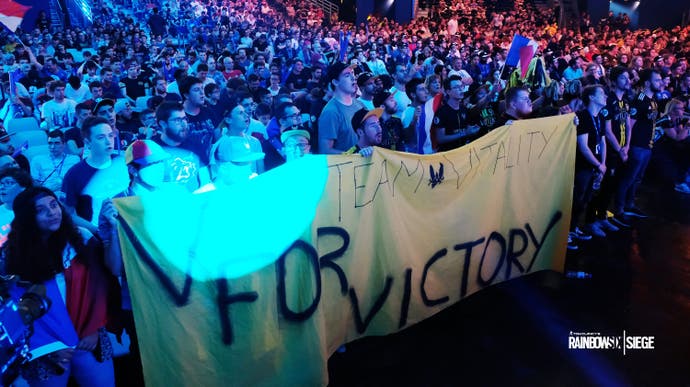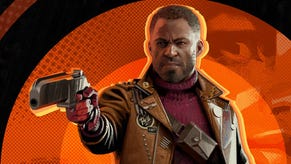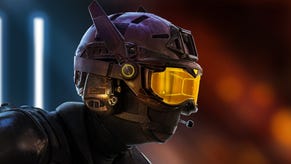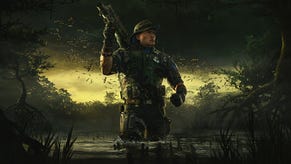How Rainbow Six Siege came back from disaster to become a top esport
Laying siege to the esports world.
Everyone knows the story of Rainbow Six Siege's troubled launch, and how Ubisoft managed to bring it back from the brink of failure to become one of the most successful games around. But what most people don't know is Siege's esports scene followed a similar path, with disaster striking at the first ever LAN event that was supposed to kickstart the competitive side of the game.
In May 2016, six months after Siege launched, Ubisoft and ESL hosted the first season PC finals at the ESL Studio in Cologne, Germany. In the grand scheme of things it was a small event, with four teams, $50,000 in prize money and a crowd made up almost entirely of press and people working on the event. However, this was the first real chance to show the world what Rainbow Six Siege could be as an esport. Any kind of LAN event with a decent prize pool brings in viewers and a good show would surely bring in a lot of new fans.
But almost instantly a major bug brought the event to a screeching halt. In the first round of the first game between PENTA Sports and VwS Gaming, a player using the operator Sledge, discovered his unique sledgehammer would not break windows correctly. At the time Sledge was one of the top operators, and not being able to use his key ability was a big issue.
"The first round, the first action we see on screen is actually indeed the infamous Sledge bug," says Alexandre Remy, brand director of Rainbow Six Siege, who was at the event. "At that moment, it felt like a tragedy because that was, again, that first action, first game, our first final ever, and a bug happened, so we had to find a work around for that. So yeah, it wasn't too much of a good start."
After the bug was discovered the match was instantly paused, with Ubisoft trying to find some way to fix it, even getting in contact with the dev team back in Montreal. However, as the hours passed with no action and just a 'back soon' screen on the stream, it became clear this was not fixable in a short amount of time. Some people in the arena even fell asleep during the break.
Eventually the event resumed with a gentlemen's agreement between teams saying they could use Sledge providing they did not use his hammer at any point. But as you might imagine, the damage had been done. Many that were interested at the start of the day didn't stick around, and the big talking point was obviously the massive tech delay. After a first showing like that, and the poor launch six months prior, things were not looking good for Siege esports.
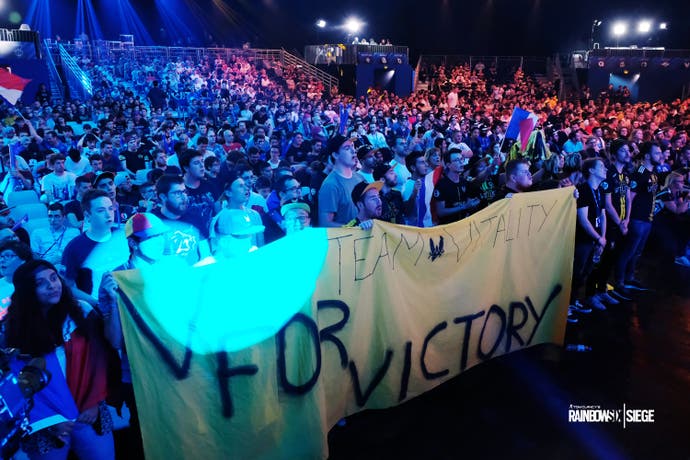
However, Ubisoft had committed to at least one year of Siege competition in partnership with ESL, and over the next few months took their season finals to ESL's studios in Leicester and Katowice. There were no more major bugs, but the viewership growth was slow. After the issues of the first event, many were skeptical of tuning in for fear of again being met with another 'back soon' screen for hours on end.
With the first year of esports coming to an end Ubisoft decided to host a major live event for the first time. The first Six Invitational featured two eight-team tournaments, one for PC and one for Xbox One, with $100,000 prize pools. It was held in Montreal, just a short walk from the studio that built Siege, and designed as a celebration of the game, where fans could meet devs and enjoy some top Siege action. It was also the first time we got to see Latin America (LATAM) and Asia Pacific (APAC) teams compete on the international stage, and was without a doubt the best Siege event yet.
"We were just thinking, how do we celebrate the one-year anniversary of the game and the fact that we're committing for a second one?" says Remy. "How do we make an event that can resonate in our community, whether you are an esports fan or not? And yes, we were taken by surprise by the level of viewership, for instance, and commitment of the people, but let's be honest, we were nowhere near whatsoever any of the big esports."
Despite the issues of the first year Remy and his team always had lofty aspirations for Siege as an esport. They were even speaking with ESL during the game's development to try and figure out how to give it the best chance of succeeding in the competitive space. The first Six Invitational did well, better than anyone expected, but it still wasn't a major esport. However, it did give a lot of important people more faith this could work.
"It was for me the end of step one, [we realised] okay the Six Invitational, we have something, we really have something," says Francois Xavier Deniele, director of esports at Ubisoft, who worked on the Siege marketing team before joining the esports side of things in year two. "The finals before was great, like in the ESL studios, but you know it was in a studio, and for the first time we went to a live event where you can meet the community. And the management from Ubi saw there is something, and we need to invest in it. That's why we recruited more people, we got more investment, the entire company is behind it."

As year two got underway the Xbox side of things was scrapped in order to focus on PC, the LATAM region became a permanent fixture alongside NA and EU in the Pro League, and viewership continued to improve. The end of season LAN events had larger prize pools and went to a couple of non-ESL studio locations such as Gamescom and a Brazilian esports arena. It was clear Ubisoft was committed to making this work - and it started to pay off quickly.
Throughout year two many of the biggest esports organisations in the world signed Rainbow Six teams. Evil Geniuses, FaZe Clan, Rogue, Counter Logic Gaming and Team Liquid all signed top teams, and as a result brought in a lot of new fans. These days most organisations tend to identify upcoming esports early on and sign teams for little money right at the start of a game's life. However, with Siege it took most of these organisations over a year to get involved, despite Remy's best efforts.
"There's a point I remember vividly, talking to Victor [Goossens, co-owner and founder of Team Liquid] when he decided to jump in last November or December," recalls Remy. "I had seen him every year from 2015, and each time I was meeting him, I said, 'Hey, I'm doing Rainbow Six, this is what I want to do. Hopefully we are esports at one point. Are you interested in it?' Then the next time it was, 'Hey look, we are expecting more people, more viewers, what do you think?' And every time he would say, 'Ah, maybe I'll pass.' But then there's a point, and he told me, 'Hey man, your consistent commitment going back all the way to launch, that helped convinced us to jump in.' "
Since then, more and more big name organisation have entered the world of Siege, with G2 Esports just signing the reigning world champions PENTA Sports in the biggest acquisition in Rainbow Six history. Now, according to Deniele, 10 of the biggest 12 esports organisations in the world have a Siege roster.

Year two continued on without any major issues. Viewership was growing, Siege was finally starting to be recognised as one of the larger scale esports and things had really turned around. But it was the second Six Invitational in February 2018 that launched it to another level.
"I think the second Invitational last February is the moment a lot of the people in the industry started to say, 'Wow look at those numbers,' " says Remy. "I only realised [the scale of it] the week before the event itself, when I went back and watched some of the VODs of the first Six Invitational. When I entered the venue I realised we had jumped generations. Honestly, the difference was striking."
The second Invitational was without a doubt the crowning moment of the Siege esports scene. Over 320,000 concurrent viewers watched the final live, and everyone took notice in the world of esports. Somehow this game that had a difficult launch, disastrous first LAN event and a fairly slow build after that, had managed to put on a show that rivalled the likes of Dota 2 and Counter-Strike's big events. Even esports that didn't have such a troubled early life haven't made it to that kind of level.
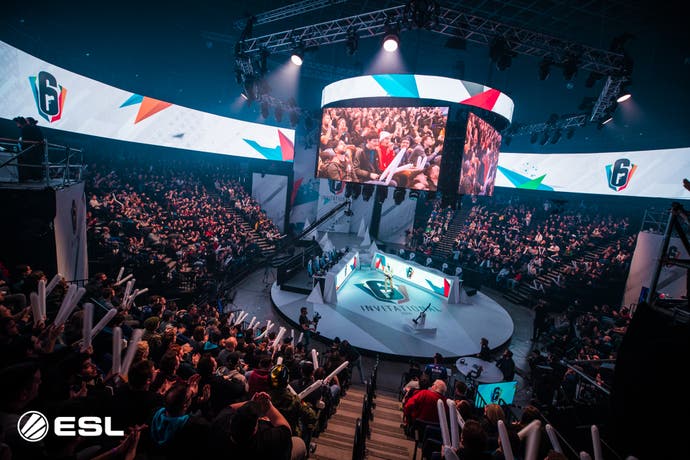
Now with year three going strong, and a new look competitive season, Siege is firmly nestled in the second tier of esports, alongside the likes of FIFA, PUBG and Hearthstone. Things are still growing as well, with the recent Six Paris Major showing Siege can sustain more than one massive event each year. While this is a great place to be, the team have even loftier expectations.
"We have a lot of things to improve with the game to better understand streaming and the match," says Deniele. "For me there are new expansions to make, such as China. We are working on it so let's see what happens, but if we want to become a top five esport title we need to be in China."
If Siege manages to crack China there is no doubt it will become a top five esport in the world. However, even CS:GO has struggled to find a foothold in the region, so that will certainly be easier said than done. But even if it doesn't, Siege's journey has been incredible.
After sitting in the ESL Cologne studio for hours, and even dozing off at one point during the first LAN finals back in 2016, I thought I would never be at another Siege esports event again and the game would disappear quietly. I am happy I was proven wrong.
